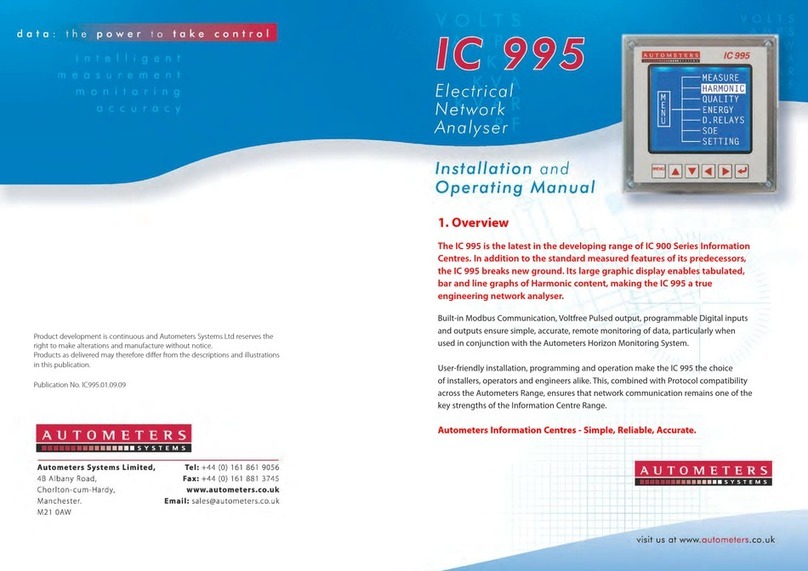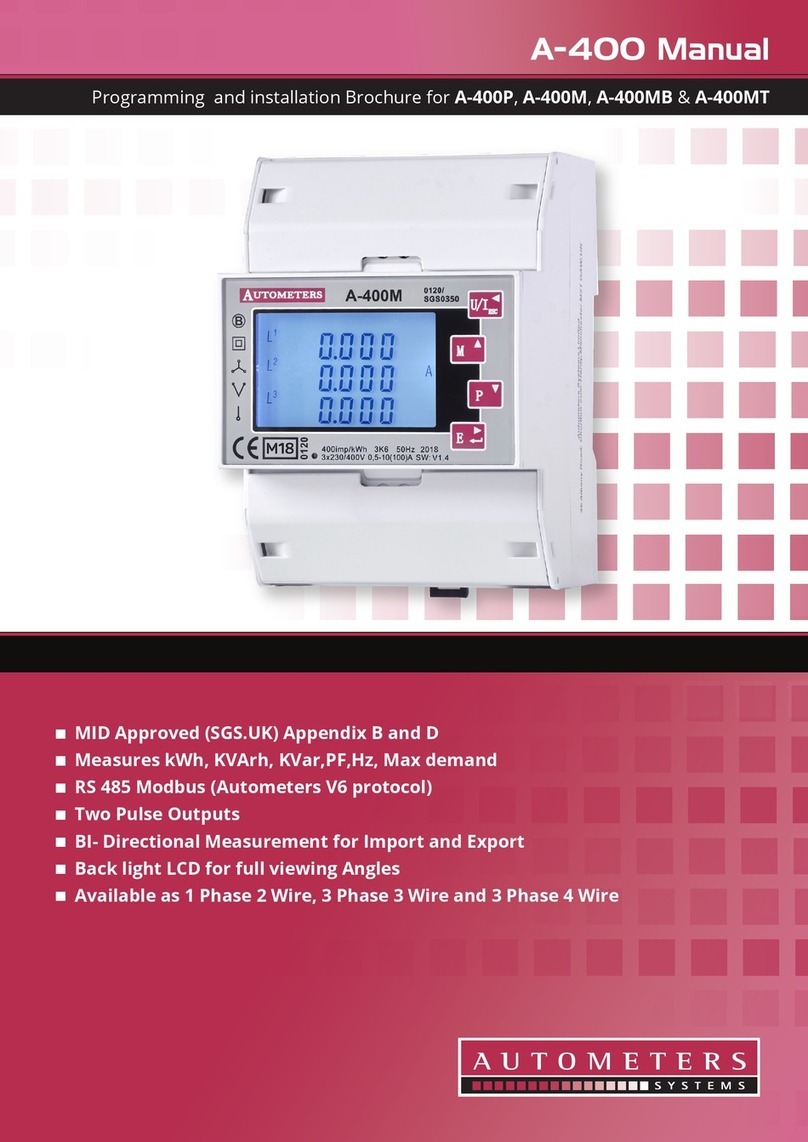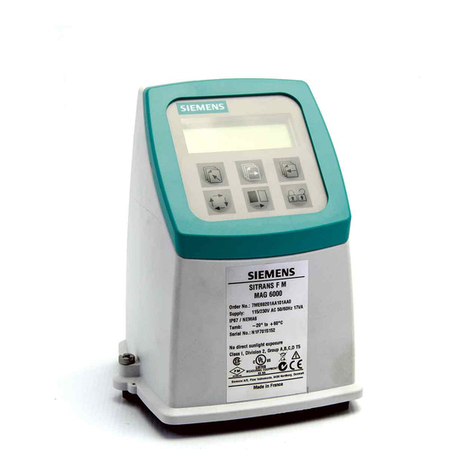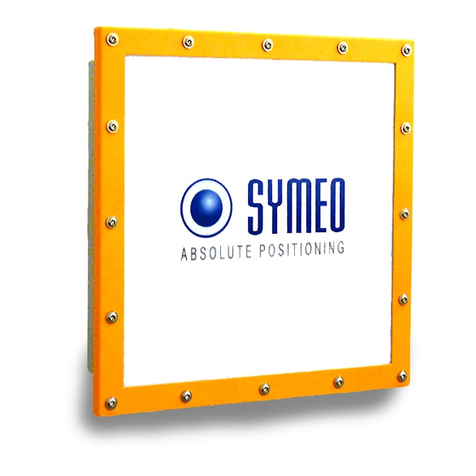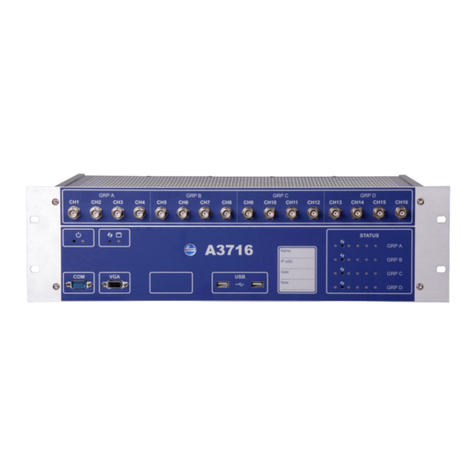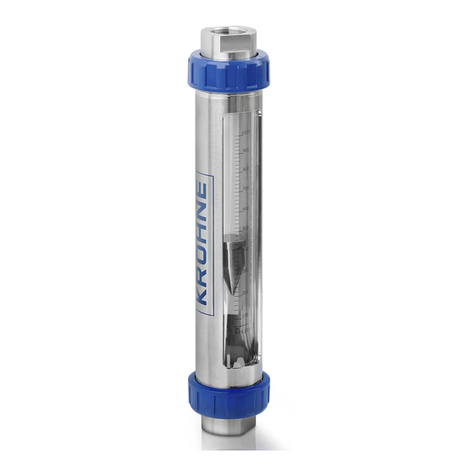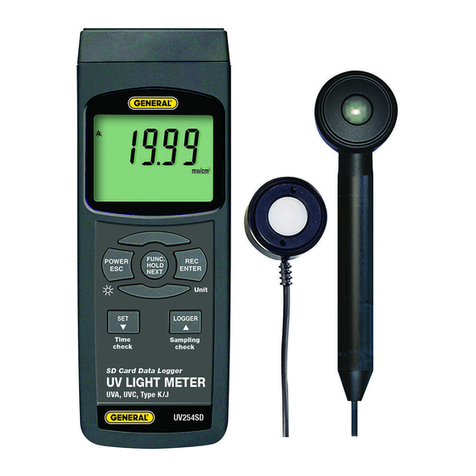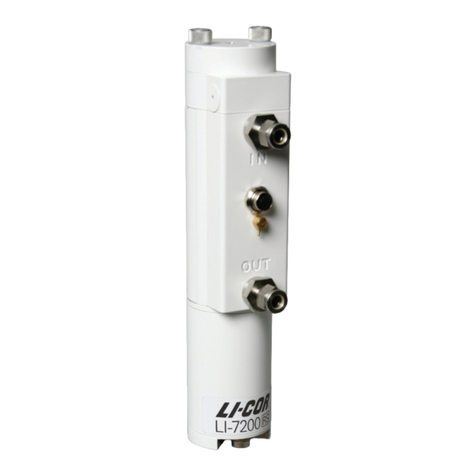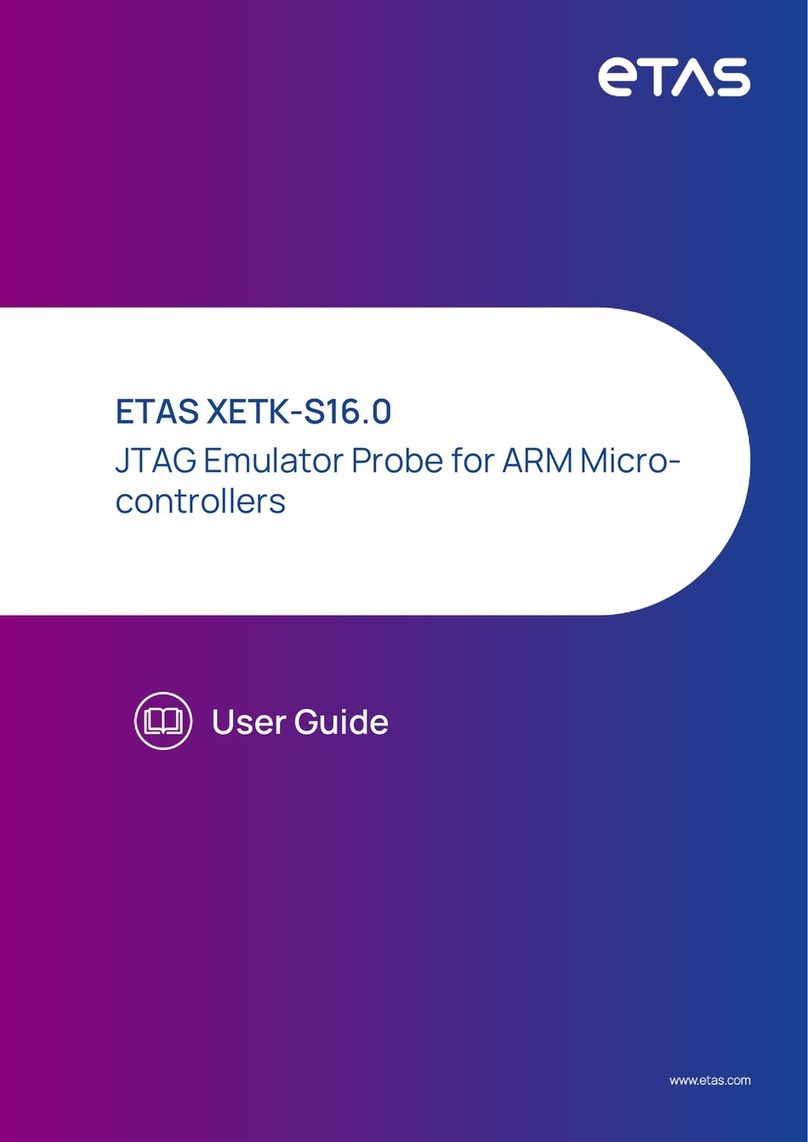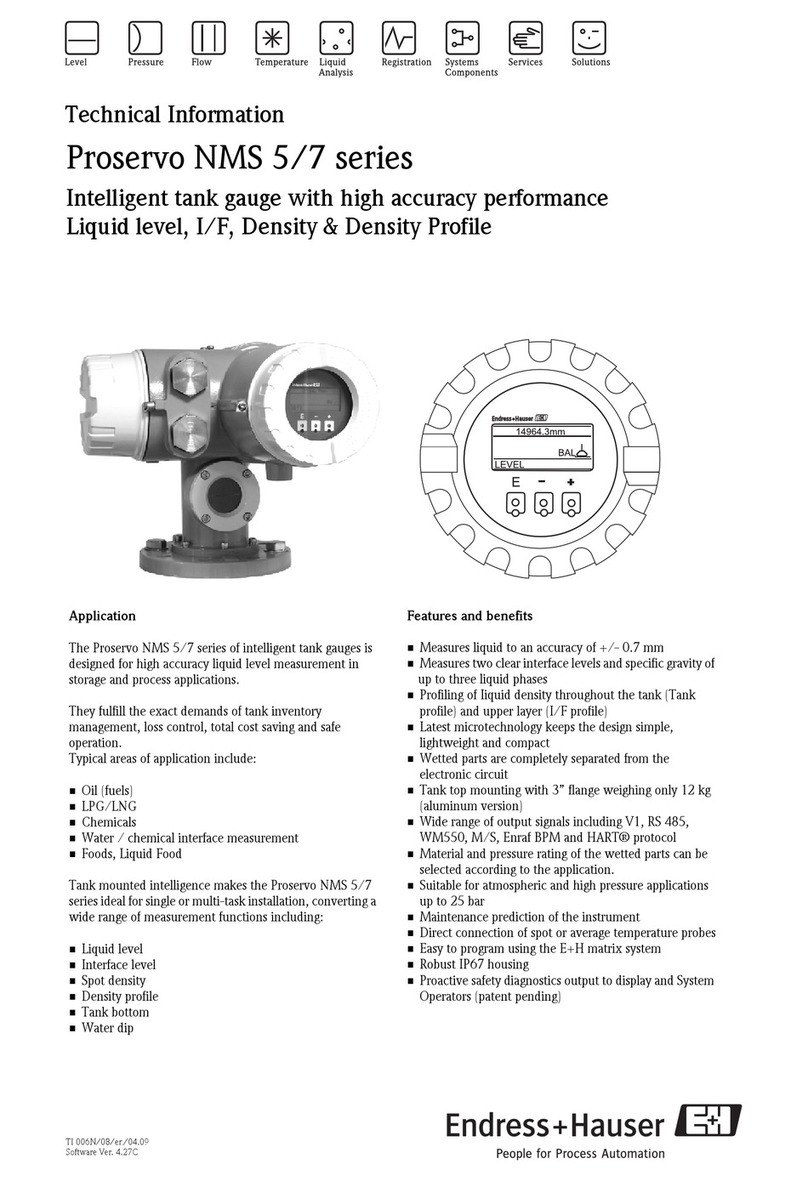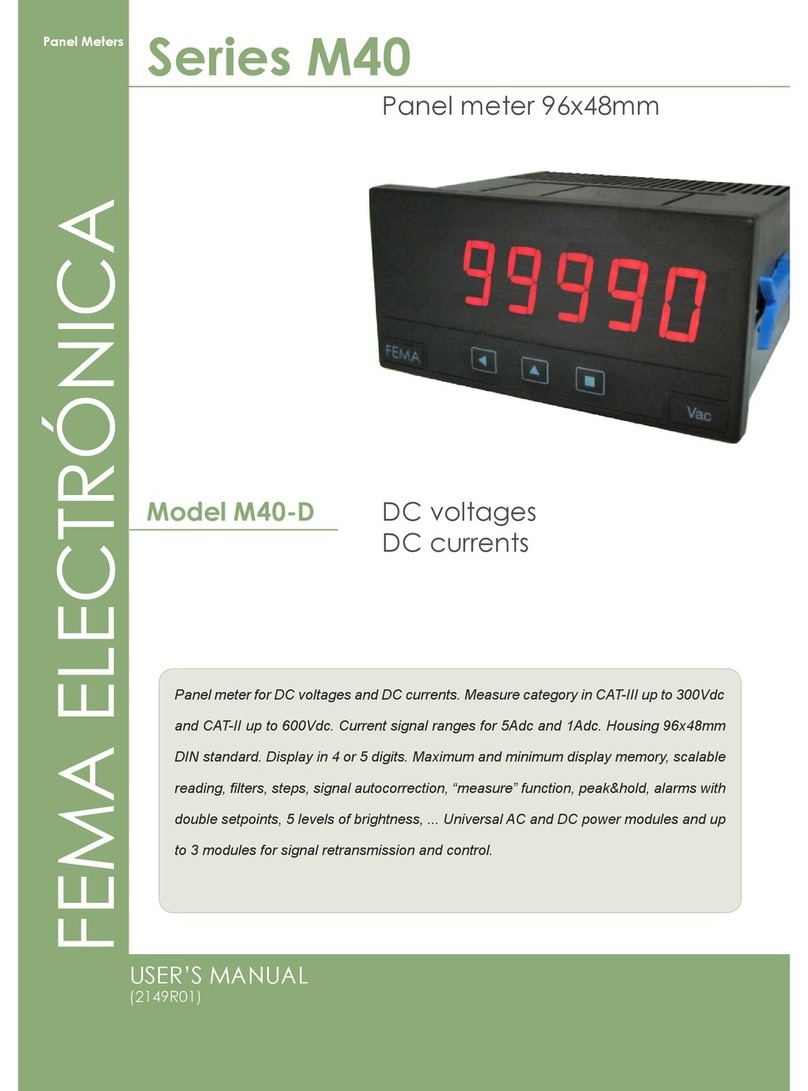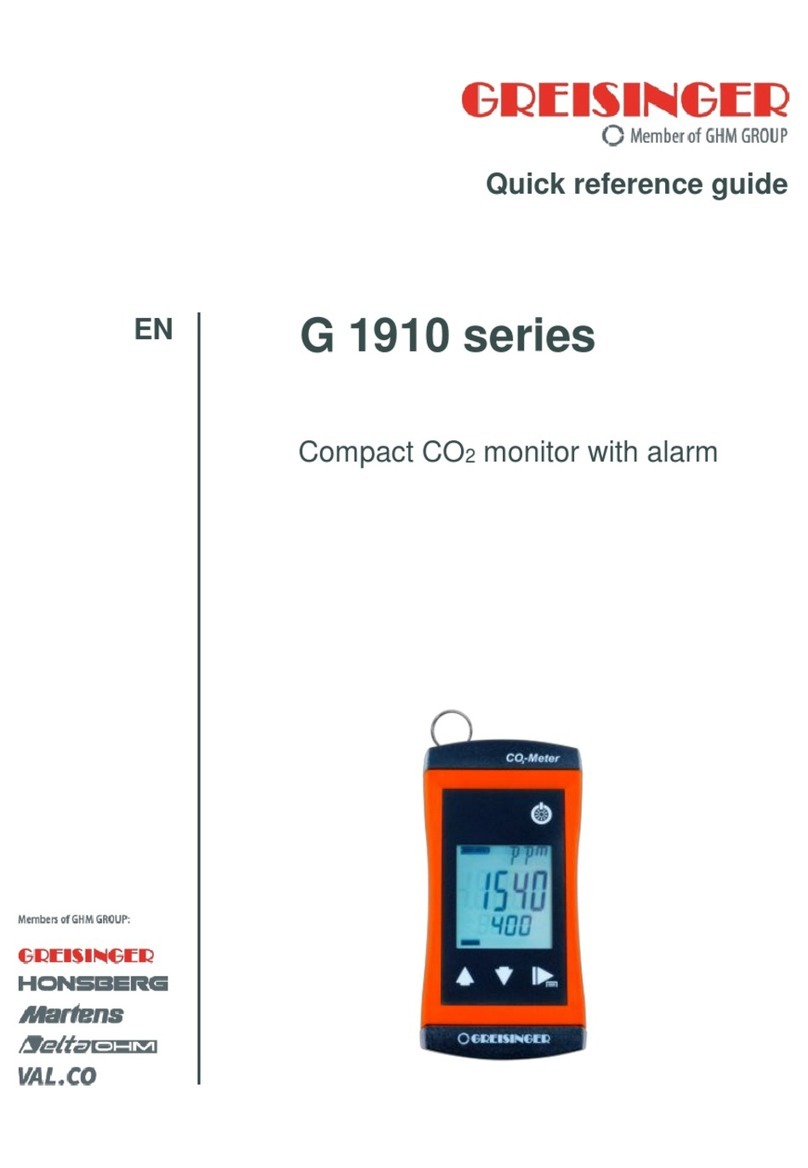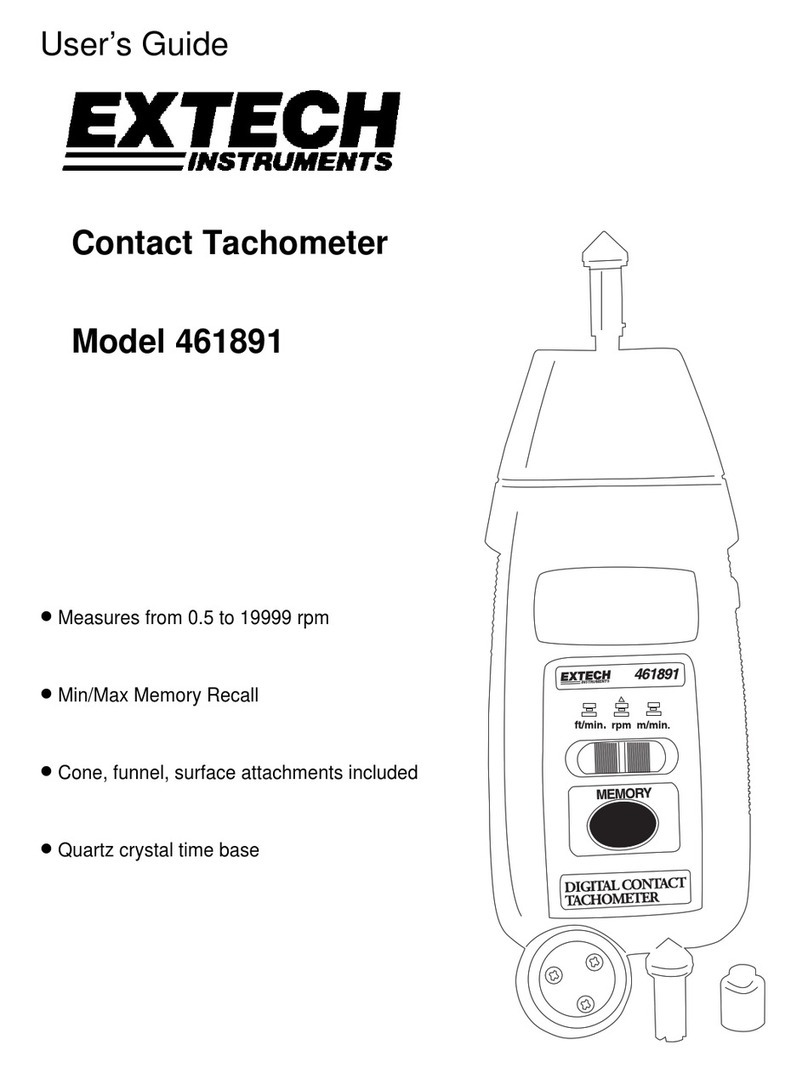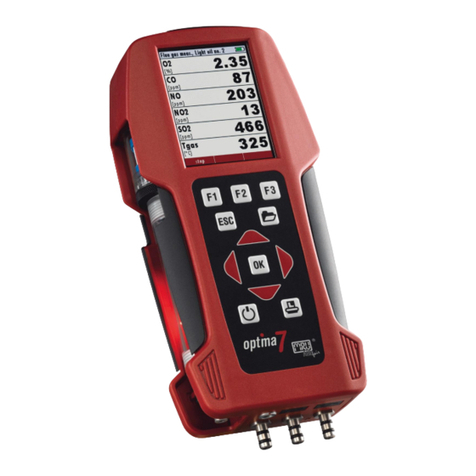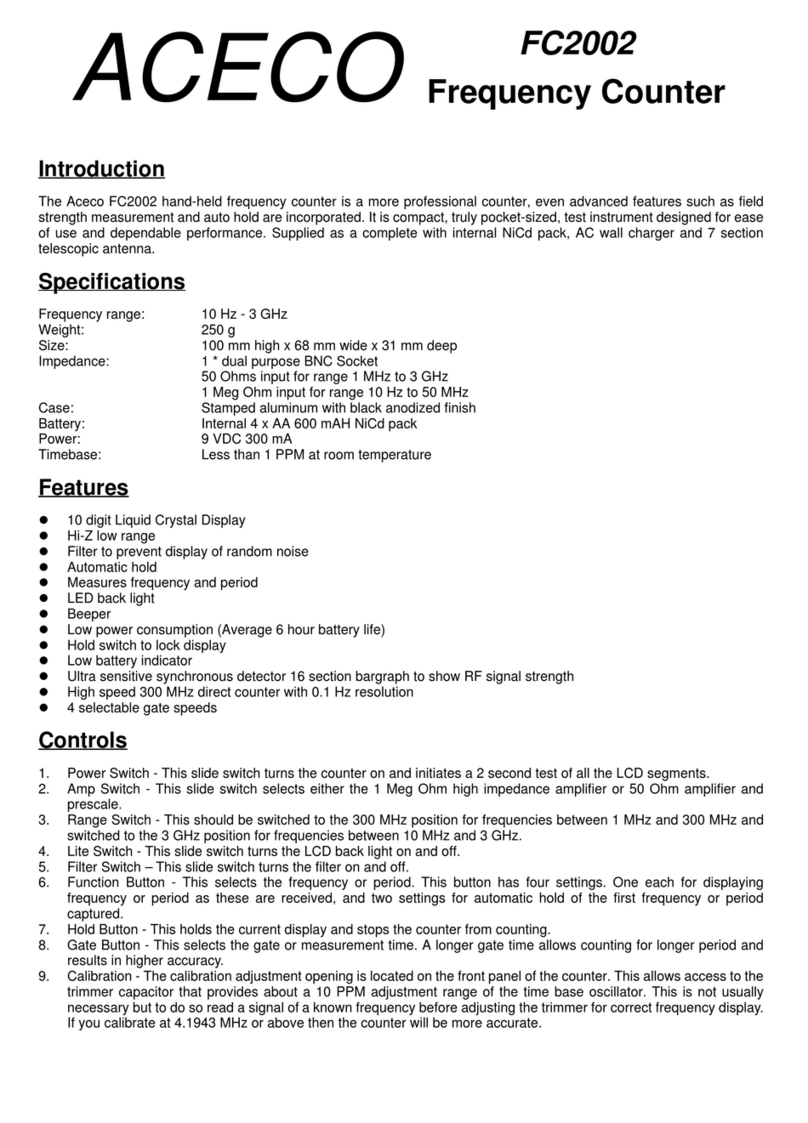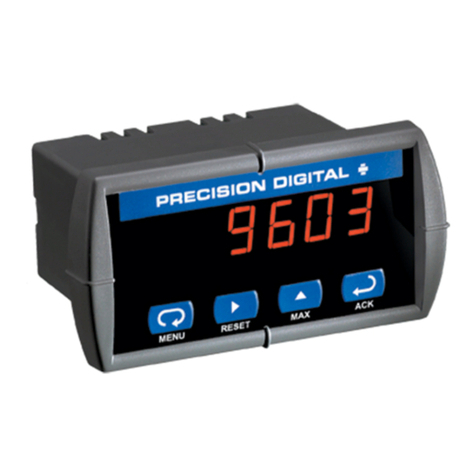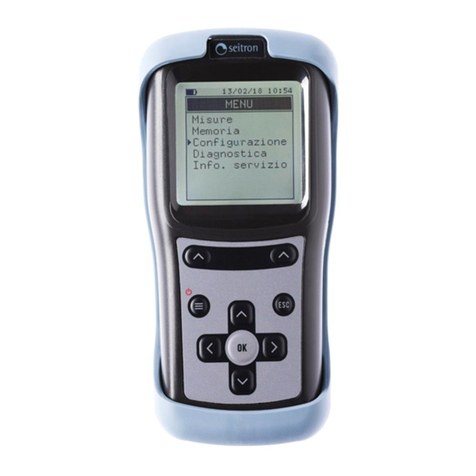Autometers Systems ic9 User manual

installation and
operation manual
IC7-C and IC9-C
horizonrangeThe fusion of land based metering and ether based monitoring
9

Overview
The IC7-C and IC9-C meter is
230/400 volt 50 Hz, 5 amp current
transformer operated meter
designed for measuring 3 phases
in a 4 wire star configured system
and is capable of transmitting
kWh and KVAh by means of
the volt free outputs which are
standard on the basic model. The
model IC9-C is supplied with fully
programmable RS485-Modbus
communication output and is
capable of transmitting all of the
data the meter monitors.
Installation
Orientation
The meters are designed to be
fitted into a panel, normally a
switchgear cabinet. It is therefore
recommended that the front of
the meter is positioned vertically
with adequate space around and
at the back for connections.
Location
The meters should be mounted in
a dry dirt free environment away
from all heat sources and very
high electric fields. Temperatures
should not exceed 70°C or fall
below -20°C.
Installing the meter.
First remove the meter from the
packaging and check for any
damage. The meter should be in
two pieces, a Front Bezel and the
back of the meter. (See diagram
1 above) The aperture required to
fit the meter is 92 mm x 92 mm.
Holding the back of the meter
in one hand and the bezel in
the other hand, present to the
opening. Slide the back of the
meter first through the opening
on the rear side of the door and
then push the bezel from the
front side over the protruding
clear plastic and push fully
home until it locks firmly.
Please note it is extremely
difficult to remove when fitted.
Please see diagram 1.
Check Contents
Package should contain:
1. Black locking bezel
2. Main meter case
3. Top terminal cover
4. Lower terminal cover
The Information Centre ic
7
-C and ic
9
-C
Diagram 1. Meter Installation
Diagram 2. External Dimension
9216 16
124
12
75
64 12
95
150
92 4315
Communication
Sockets
Cable Channel
Cable Channel
Cable Entry
All Dimensions in mm
DILL SWITCH
Phasing and polarity of the AC
current and voltage inputs and
their relationship is critical to the
correct operation of this meter.
The connection diagram shows a
current transformer fitted to the
Neutral.
If you do not want to monitor the
neutral current it is not necessary
to connect to terminals 7 and 8.
Terminal 9 is the Neutral supply
Terminals 10,11,and 12 are the
three phase line voltages (230
volt). Terminals 14,15, and 16 are
the low voltage pulse output. (volt
free)
2
L3 N
LOAD
MAINS
L3
L2
L2
L1
L2
S2
S1
P2
P1
S2
S1
P2
P1
S2
S1
P2
P1
S2
S1
P2
P1
L1
1 Amp
230/400Volt 50Hz
0.1-5Amp
Communication
Sockets
Cable Channel
Cable Channel
Fuse
Cable Entry
DILL SWITCH
ON DIP
1234567812345678
ON DIP
1234567812345678

Wiring information
Power supply
The standard IC9 requires a 230
volt 50 Hz supply. This is powered
from the L3 phase and Neutral
internally.
Wiring
Electrical and communication
connections are made directly to
the back of the meter.
The main electrical connections are
made to terminals 1-16 at the lower
half of the meter, Communication
Modbus 485 connections are made
via the two sockets at the top of the
meter on the side. Please see dia 2.
Programming
the CT Ratio '13'
To programme the CT Ratio the
dill switch number "8" on the
lower dill switch block must be in
the "On" position
See diagram 6 for position of dill
switches.
Connect power to the meter.
To programme, press the
function key on the front of the
meter, which will then take you
into the display sequences for
programming the CT Ratios.
You should now see the screen
below
Diagram 3: Programming Screen
(a) You will notice the cursor
flashing on the first "zero", by
pressing the "Energy" key the
zero will change to 1, if you press
the "Energy" key again it will
change to 2 and so on.
(b) If you go past your number
continue going through the
numbers until the number you
require reappears. Stop at your
correct number '1'.
(c) Press the "Enter" key and the
flashing cursor will move to the
right. Stop at number '3'. Press
function.
Diagram 4 : CT Setting Screens
(d) Repeat steps (a) to (c) to enter
the correct programming details
for your chosen CT ratios.
(e) When the process is complete
press the "Function" key to take
you back to the default screen.
Note: When setting CT ratios and
if you have only three digits you
must enter "0" as the first digit.
e.g. 100/5 would be entered as
0100/5.
When you have programmed the
meter, disconnect the power to
the meter and ensure dill switches
are set to the 'OFF' position.
Operating
information
Power on
After you have programmed the
meter and you have put power
onto the meter, the first screen
to appear will indicate details of
the meter and your programmed
parameter values. After 10
seconds will revert to normal
default screen. "b"
a) Power On:
b) Normal Default Display
Test Mode Display
At this stage it is advisable to check
the connection to the meter, to do
this please see page 6 function 50.
This will enable you to see if the
current transformers have been
connected correctly and the three
voltages are present.
Diagram 5: Connection Check Screen
The diagram above is showing
that the current transformers
are correct and the three phase
voltages are correct.
If the current transformers are
correct but the voltage on each
phase is missing or below 200
volts, then the screen will look as
in the diagram below:
PLEASEENTERFUNCTIONNUMBER**RATIOCTPRIMARY=****/5NTPRIMARY=****/5
3
IMPORTENERGYKWH=000000.00KVAH=000000.00KVARH=000000.00CONNECTIONL1importV1ONL2importV2ONL3importV3ONCONNECTIONL1importV1OFFL2importV2OFFL3importV3OFF
IC3P4W230/400V50HZCTRatio****:5NTRatio****:59

Screen Definitions
Below are the available screens,
which can be seen by pressing
the various keys on the front of
the meter. After 10 seconds the
meter will revert to the "IMPORT
ENERGY" screen.
By pressing the following keys the
display will show:
a) Volts
Press the key twice to view Page 2
b) Amps
c) Power Factor
d ) Actual Demand
e) Energy
Press the key twice to view Page 2
f) Harmonic
Press 'H' key, the dislay change as
below:
1. HARMONIC L1V (%)
2. HARMONIC L2V (%)
3. HARMONIC L2V (%)
4. HARMONIC L1A (%)
5. HARMONIC L2A (%)
6. HARMONIC L3A (%)
7. HARMONIC NA (%)
When it enter any harmonic
display, press 'ENTER', it will
display one kind of harmonic
data.
Page 1
Page 2
Page 3
Page 4
Page 5
Page 6
g) Instantaneous KW
h) Instantaneous KVAR
i) Instantaneous KVA
Page 2 Max Demand
4
IMPORTENERGYKWH=000000.00KVAH=000000.00KVARH=000000.00EXPORTENERGYKWH=000000.00KVARH=000000.00VOLTAGEL1=000.0L1-L2=000.0L2=000.0L2-L3=000.0L3=000.0L3-L1=000.0
FREQUENCY50.00Hz
AMPSL1=000.0L2=000.0T=000.0L3=000.0N=000.0INSTKWL1=00.0000L2=00.0000T=00.0000L3=00.0000INSTKVAL1=00.0000L2=00.0000T=00.0000L3=00.0000INSTKVARL1=00.0000L2=00.0000T=00.0000L3=00.0000ACTDEMANDKW=00.0000KVAR=00.0000KVA=00.0000MIN=00MAXDEMMANDKW=00.0000KVAR=00.0000KVA=00.0000POWERFACTORL1=0.000L2=0.000T=0.000L3=0.000HARMONIC***(%)THD=0.009th=0.003th=0.0011st=0.005th=0.0013th=0.00HARMONIC***(%)7th=0.0015th=0.0017th=0.0025th=0.0019th=0.0027th=0.00HARMONIC***(%)21st=0.0029th=0.0023th=0.0031st=0.0033th=0.0041st=0.00HARMONIC***(%)35th=0.0043th=0.0037th=0.0045th=0.0039th=0.0047th=0.00HARMONIC***(%)49th=0.0055th=0.0051st=0.0057th=0.0053th=0.0059th=0.00HARMONIC***(%)61st=0.0063th=0.00

5
viii. Press 'ENTER' Key
To see meter information
continually press to scroll down
pages.
Page 1
Page 2
Page 3
Page 4
Page 5
Page 6
2) Function operating display:
Press 'FUNCT' key. Display will
change to below.
On the screen above, you will see
two asterix, one flashing.
Type in the first number of the
required function you wish to
see by pressing the 'ENERGY'
key continually until you have
reached the correct number, then
press 'ENTER' key. Repeat for the
second asterix.
When both numbers have been
entered, press the "FUNCT' key.
This will take you to the desired
screen.
To return to the normal screen
press 'FUNCTION' key again.
If you enter an incorrect number
or a function which is not
available on this model you will
see the screen below.
METERDESCRIPTION3PHASE4WIRE230/400V5A50HzRATIOSVT230.0:230.0CT5:5NT5:5PULSESDETAILSPULSEVALUE=1kWhPULSEPERIOD=100msRESETMDFUNC-012RATIOFUNC-013CONTRASTFUNC-016CONNECTIONFUNC-050PULSE TESTFUNC-060PLEASEENTERFUNCTIONNUMBER**FUNCTIONSELECTEDIS NOT
AVAILABLEAUTOMETERSLTDIC9SERIAL No:9000001ADDRESS:00
Function Option Number
Number
12 Demand reset
13 Ratio CT ratio Primary
16 Display contrast + or - Primary
50 Connection test
60 Pulse test
List of function code as below:

6
RESET MAXIMUM DEMAND
Function 12.
To reset maximum demand enter
Function 12
(page 5 function operation
display)
press “enter” key.
Press “Funct” key to return to
normal display.
SETTING CURRENT
TRANSFORMER RATIO.
Function 13.
To set C.T. ratio see page 3.
DISPLAY CONTRAST.
Function 16.
To alter the display enter function
16.
(See Page 5 function operation
display)
The curser will flash on one of the
two signs.
To increase contrast press “enter”
key to move the curser to the
flashing “+” sign,
Display will change, press the
“Enter “key to step the contrast.
Press “Funct” key to return to
normal display.
CURRENT TRANSFORMER
AND VOLTAGE CONNECTION
SETTINGS
Function 50
To check connections enter
function 50.
(See Page 5 function operation
display)
Press “Funct” key to see
connections.
Press “Funct” key to return to
normal display.
PULSE TEST
Function 60
To test the relay output enter
function 60
(See Page 5 function operation
display)
Press “enter key”
Press “Funct” key to return to
normal display.
PRESSENTERKEYTO RESETMDRATIOCTPRIMARY=****/5NTPRIMARY=****/5DISPLAYCONTRAST+-CONNECTIONL1importV1OFFL2importV2OFFL3importV3OFFRELAYPULSETESTPULSEEVERYSECONDPRESSENTERTOEXIT
Diagram 6.
L3 N
LOAD
MAINS
L3
L2
L2
L1
L2
S2
S1
P2
P1
S2
S1
P2
P1
S2
S1
P2
P1
S2
S1
P2
P1
L1
1 Amp
230/400Volt 50Hz
0.1-5Amp
Communication
Sockets
Cable Channel
Cable Channel
Fuse
Cable Entry
DILL SWITCH
Position of Communication Sockets
ON DIP
1234567812345678
ON DIP
1234567812345678

7
Wiring Information
Power Supply
The standard IC7-C and IC9-C
requires a 230 volt, 50Hz supply.
This is provided from the L3
phase and Neutral internally.
Wiring
Electrical and communication
connections are made to
terminals 1-6 at the lower half
of the meter. Communication
Modbus 485 connections are
made via the two sockets at the
top of the meter on the side.
Please see diagram 3.
Programming the
Meter
To program the meter the dill
switch, number “8” on the lower
dill switch block must be in the
“on” position.
Programming the Modbus
Meter Register
Each meter that is connected to
a Local Area Network (LAN) must
have a unique modbus register
so that it can be identified by the
computer processor. Allocating
a meter modbus register is
accomplished using the upper
block of dill switches. The dill
switches in this block each
represent a number, in geometric
progression starting with dill
switch number “8”. Thus switch
number “8” represents register
number “1”, switch number “7”
represents register number “2”,
switch number “6” represents
register number “4”, switch
number “5” represents register
number “8” and so on.
To allocate a meter register
number the required dill switches
must be switched into the “on”
(up) position.
Thus: To allocate meter register
number “1”, only dill switch
number “8” on the upper block
of dill switches needs to be in the
“on” position.
To allocate meter register number
“14” dill switches numbers “5”,
“6” and “7” must be in the “on”
position.
To allocate meter register number
“39” dill switches numbers “3”,
“6”, “7” and “8” must be in the
“on” position. Etc.
Programming the
Meter Functions.
The operating functions of the
meter, such as baud rate, data
format etc are programmed using
the lower block of dill switches,
as follows:
Baud Rate
Programming the Baud rate
utilises dill switches numbered
“1” and “2” on the lower dill
switch block, as follows:
Baud Rate Dill Switch Dill Switch
1 2
9600 Off Off
19200 On Off
38400 Off On
1200 On On
Wire Mode
Programming wire mode utilises
switch number “3”, as follows:
Two wire mode: switch Off
Four wire mode: switch On
Modbus Type
Programming the modbus type
utilises switch number “4”, as
follows:
RTU: switch Off
ASCII: switch On
Parity Type
Programming the parity type
utilises switch number “5”, as
follows:
Even: switch Off
Odd: switch On
Data Format
Programming data type utilises
switch number “6”, as follows:
ASCII string: Off
Floating point: On
Floating Point Format
Programming the floating point
format utilises switch number
“7”, as follows:
High word first: switch Off
Low word first: switch On
LED Mode
Programming the LED mode and
CT ratio utilises switch number
“8”, as follows:
Calibration 1000 impulses per
Kwh: switch On
Kwh impulse with output relay:
switch Off
ON DIP
1234567812345678
TOP SWITCH
MODBUS
ADDRESS
ON DIP
1234567812345678
LOWER SWITCH
MODBUS
PARAMETERS

Performance and data
Overview
The IC7-C and IC9-C meters are 230/400 volt 50 Hz, 5 amp
current transformer operated meter designed for measuring
3 phases in a 4 wire star configured system and is
capable of transmitting kWh and kVAH by means of the
volt free outputs which are standard on the basic model.
The model IC9-C is supplied with a fully programmable
RS485-communication output and is capable of
transmitting all of the data the meter monitors.
Technical Parameters
Meter Standard BS EN 61036
Accuracy Active 1.0, Reactive 2.0
Reference Voltage 3 x 230 /400 v
Basic Current 5 Amp
Maximum Current 6 Amp
Frequency 50/60 Hz
Pulse Constant (LED strobe) 1000 imp/kWh,
1000 imp/ kVAH
Range of Voltage 200- 250 volt
Operating Temperature -30°C – +70°C
Storage Temperature -30°C – +80°C
Power Consumption 0.01VA @5A; 0.8W,
8VA @230V
Pulse Output IEC 62053-31
Red L.E.D. Pulse Indication.
Display 20 x 4 character LCM with
background light.
Output Details 2 – Opto isolated Mosfet
devices: 400 ACV, 100ma
KWh, KVAH
Pulse Duration 80-100 ms closure
Pulse Value C.T. Value less than 1000/5A
= 1 kWh/imp
C.T. Value 1000/5A or more
than = 10 kWh/imp
0.4
0.3
0.2
0.1
-0.1
-0.2
-0.3
-0.4
0.1 1.0 2.0 3.0 4.0 5.0 6.0
IC9Load Curve
0.5 Lag 1.0
Unity 0.5
Lead
8
Current transformer selection
For accurate monitoring, correct selection
of the current transformers is critical.
Always select the current transformers suitable
for the load you are actually monitoring.
DO NOT automatically select current
transformers to the breaker size
in case the load is significantly lower.
Main Function
Measurement and Information available from
Keypad.
1. Active, Reactive, Apparent import energy
2. Active, Reactive export energy
Real Variables
1. Voltage: 3 phase voltages, 3 line voltages
2. Current: 3 phase current and neutral
current
3. Active instant (kW): 3 phase and total
power
4. Reactive instant (KVAR): 3 phase and total
power
5. Apparent (KVA): 3 phase and total power
6. Power factor: 3 phase and total power
factor
7. Frequency
Demand (Demand period 30 minutes)
1. Current Demand: Active, Reactive,
Apparent demand
2. Maximum demand: Active, Reactive,
Apparent Maximum demand
Performance characteristics
Diagram 9: Typical load curve with
balanced load at 50 Hz.

Autometers Systems Limited
4b Albany Road, Chorlton-cum-Hardy, Manchester M21 0AW
Tel: +44 (0)161 861 9056 Fax: +44 (0)161 881 3745
Important
The meter must be fitted by a competent person and
must be fitted in accordance to the latest edition of
electrical regulations concerning electricity meters.
The attention of the specifier, purchaser, installer and
user is drawn to the special measures and limitations
to use, which must be observed when this product
is taken into service to maintain compliance with
the CE directives currently in force. Details of these
special measures and limitation to use are available
from HMSO.
Ref: IEC1000-5-1 (BS195/210788DC), IEC1000-
5-2 (BS195/214642DC), IEC1000-5-6 (BS195/
210789DC).
Dedicated customer service
Customer service is the cornerstone of the company’s
success. A positive service policy is observed
throughout every specialist area of operation.
The personal involvement of the directors at every
level, a highly trained and motivated staff, fully
computerised systems and in depth stock holding,
combine to provide a level of service which has
earned the appreciation of customers across the
spectrum of the UK and export markets.
Computerised distribution systems are geared to
consistent 24-hour despatch of products, with 20-
minute despatch being possible in respect to urgent
demand for small orders.
Product range
Metering and monitoring equipment ranges from
single and three phase kWh meters to a sophisticated
range of fully programmable information centres.
Also available are Electronic meters capable of
monitoring over 400 individual parameters with full
memory backup for in depth graphical analysis of
power usage, together with a range of devices which
enables data to be transferred utilising leading-edge
telephone technology, thus enabling the information
to be sent directly to the web and viewed via a PC,
a laptop computer or even a mobile ‘phone. The
information can also be sent to a dedicated internal
server if preferred.
Product development is continuous and Autometers
Systems Ltd reserves the right to make alterations
in specifications and manufacture without notice.
Products as delivered may therefore differ slightly
from the description and illustrations contained in
this publication.
Publication No. IC9. 03.06
This manual suits for next models
2
Table of contents
Other Autometers Systems Measuring Instrument manuals
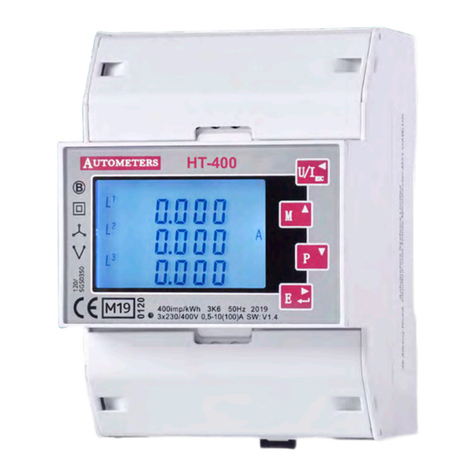
Autometers Systems
Autometers Systems HORIZON HT-400 User manual

Autometers Systems
Autometers Systems HORIZON HT-1095 User manual
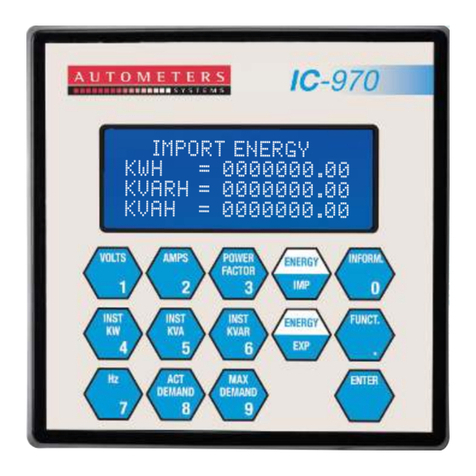
Autometers Systems
Autometers Systems IC 970 Installation instructions
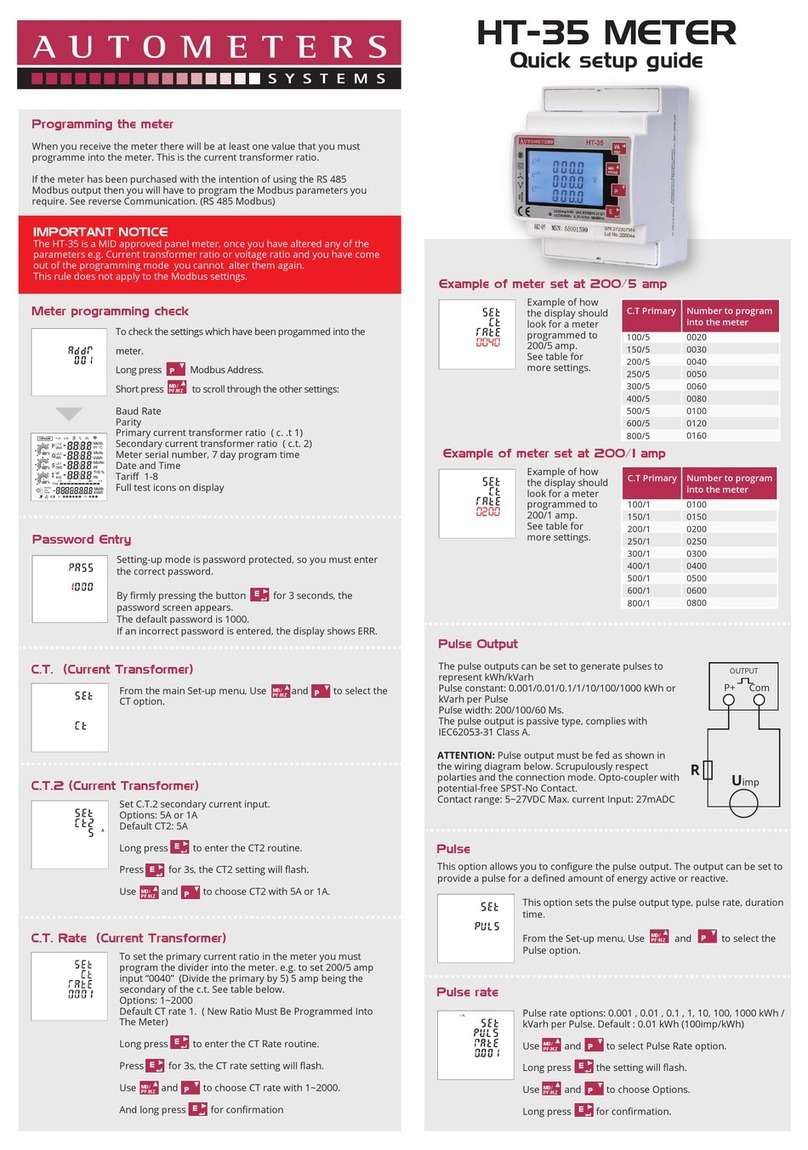
Autometers Systems
Autometers Systems HORIZON HT-35 User manual
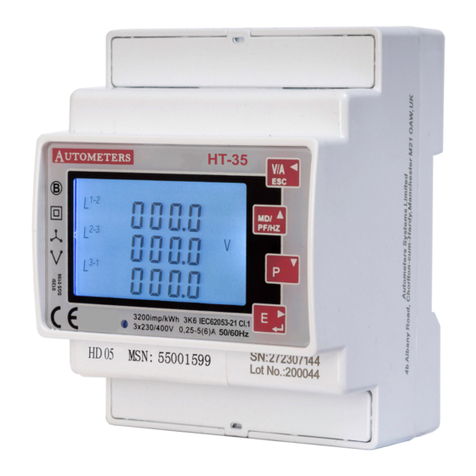
Autometers Systems
Autometers Systems HORIZON HT-35 User manual
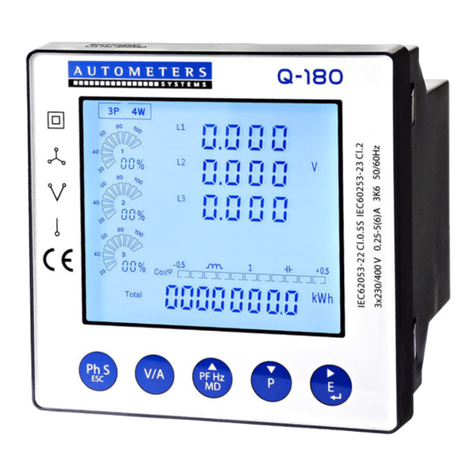
Autometers Systems
Autometers Systems Q-180 User manual
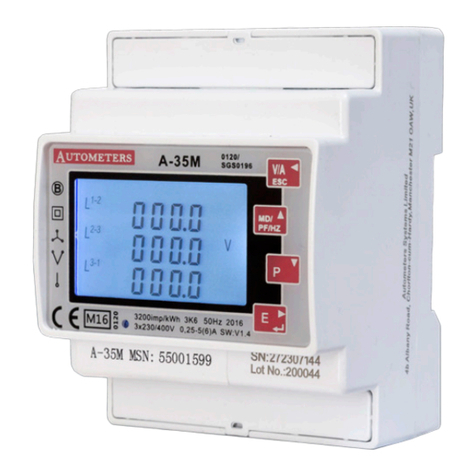
Autometers Systems
Autometers Systems A-35M User manual
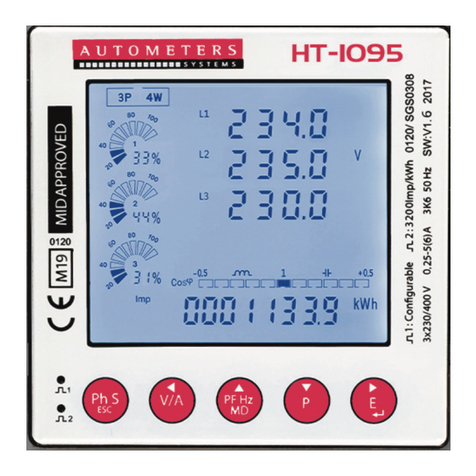
Autometers Systems
Autometers Systems HORIZON HT-1095 User manual
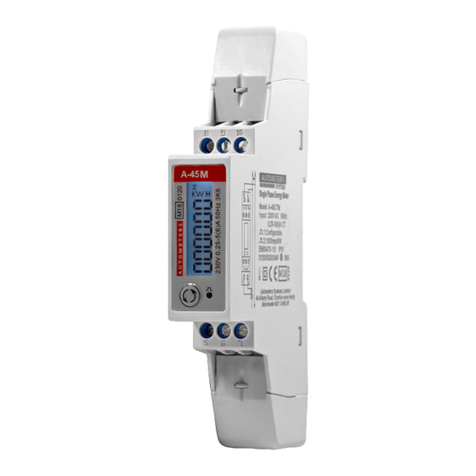
Autometers Systems
Autometers Systems A-45 Series User manual
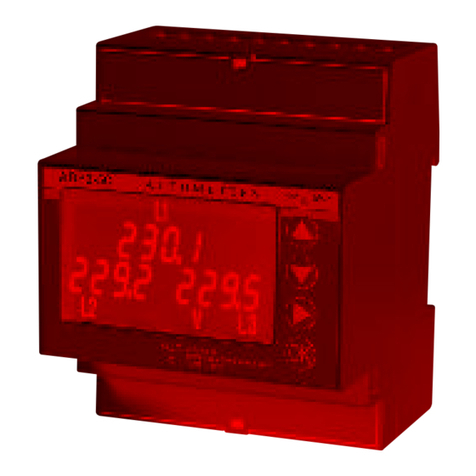
Autometers Systems
Autometers Systems ADP3-80C User manual
